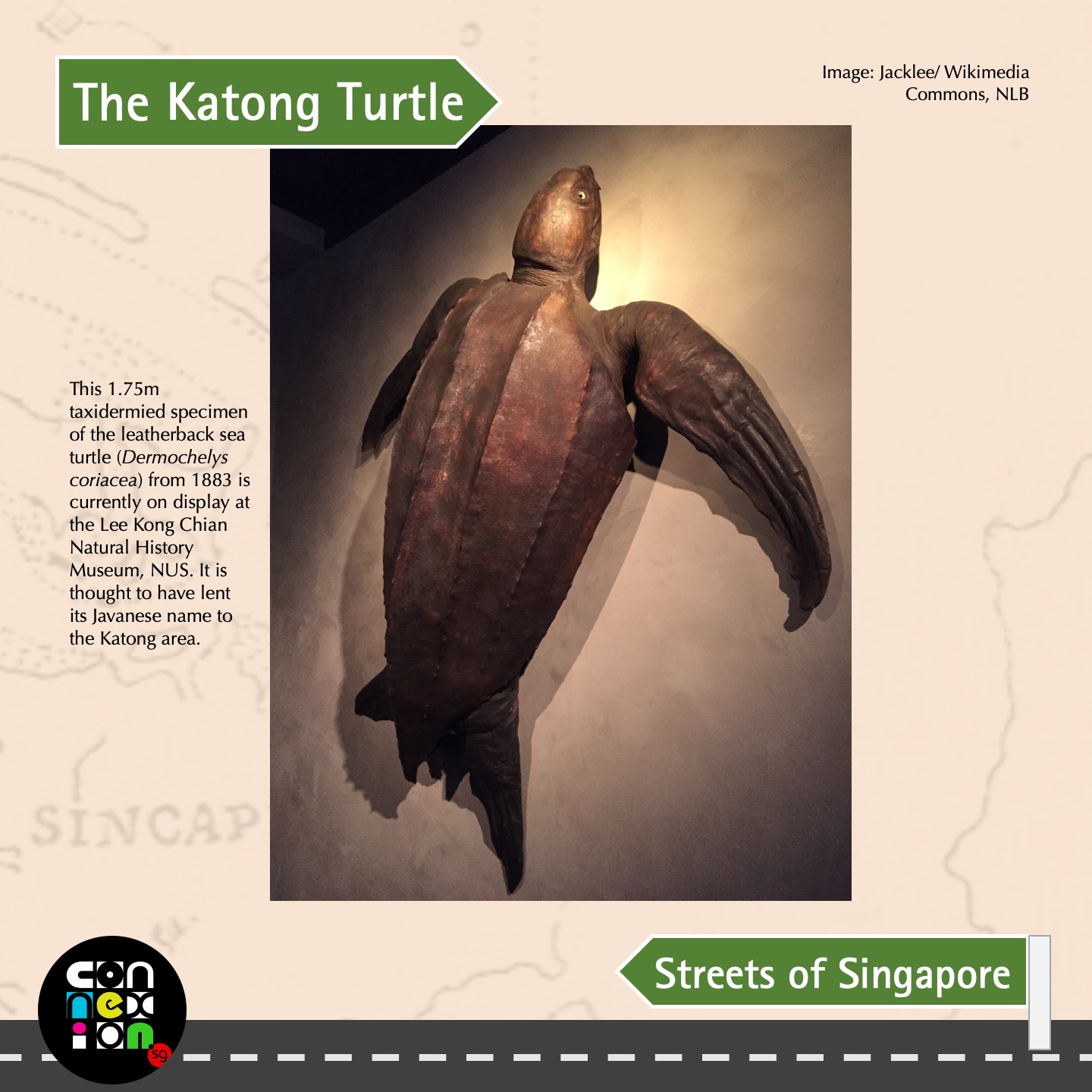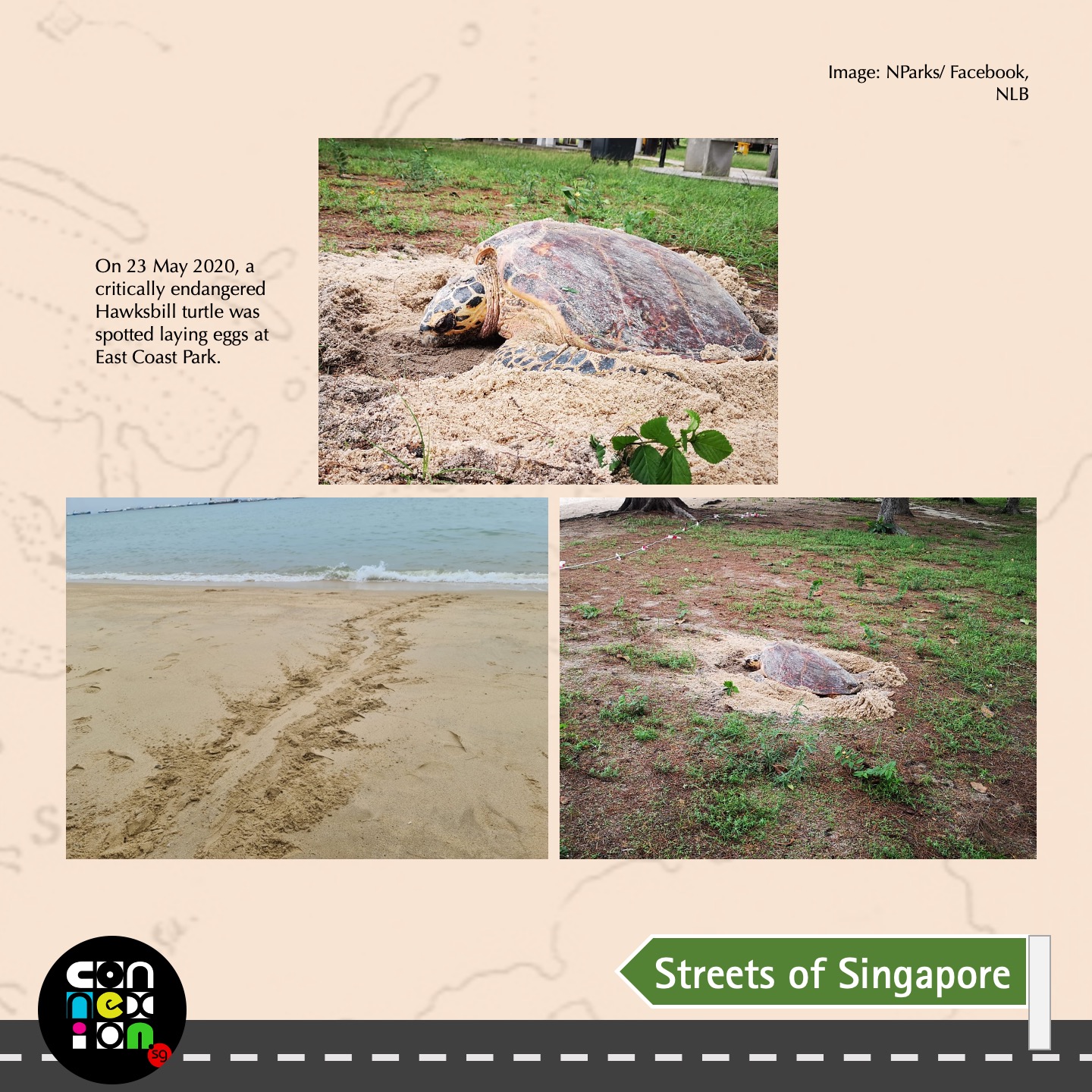Wildlife Conservation
Katong might just be home to some of the prettiest #StreetsOfSingapore and great food (laksa!). And, it turns out, it plays a part in revitalising our biodiversity too.
Before it became ‘east side, best side’, Katong was home to several small fishing kampongs. It is believed to have gotten its name from an ultra-rare sighting of the Leatherback sea turtle (known as “Katong” in Javanese) in the area in 1883. The actual turtle is still around today, albeit taxidemised, on display at the Lee Kong Chian Natural History Museum in NUS.


More recently, Katong has lived up to its namesake and played host to another rare turtle. On May 23 last year (which coincidentally is World Turtle Day annually), a critically endangered Hawksbill turtle laid her eggs at East Coast Park, a stone’s throw away from Katong. Together with the Green Turtle, the Hawksbill is one of the two species of marine turtles found on our shores. They may visit the same site to nest every few years — here's more info on what to do when that happens: https://www.nparks.gov.sg/.../animal.../hawksbill-turtles
This is promising news for our island and a step in the right direction as we aim to conserve and restore our native flora and fauna. Apart from the Hawksbill turtle, other wildlife, such as otters, have made a comeback to our cleaned-up waterways. But we are not stopping here — our City in Nature vision includes plans to create a 400ha park network to protect our current nature reserves.
While wildlife conservation is going to involve some trade-offs, what can we do to make this island an even better home for all our inhabitants — both human and animals?
References: Urban Explorers of Singapore/Facebook, What’s in the Name (Ng Yew Peng), NParks/Facebook, The Straits Times, Singapore Green Plan 2030

